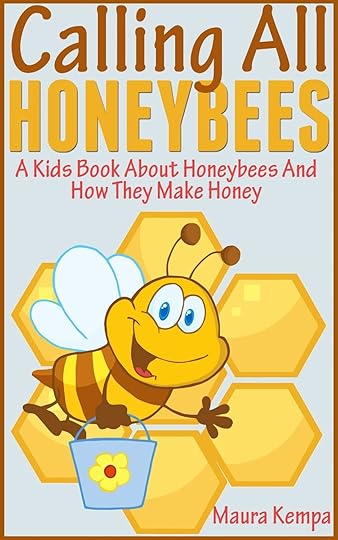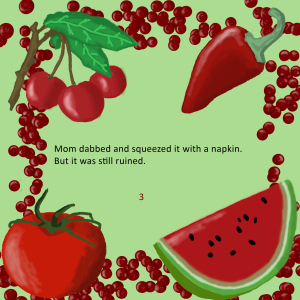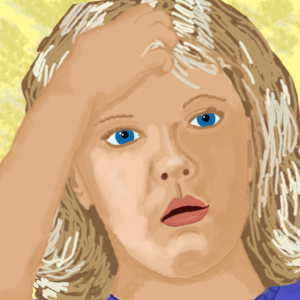Bonnie Ferrante's Blog, page 90
September 10, 2014
Zimmerman, Kurt. Alex Builds a House. Book Review.

Smiley, Miley. The Farm. Book Review.

This is a preschool rhyming book. Each page features a farm animal. It is written in the rhyme scheme A B C B. Unfortunately, most authors don’t realize how difficult it is to write good rhyme. The first two pages work well, but by the time we get to the third page the rhythm starts to fall apart. At one point the author rhymes wool and cool.
On some pages, the story seems to be sacrificed in order to rhyme,
“Goats are wandering
All over the farm
Being funny
And full of charm”.
I don’t think this page would mean much to the targeted audience.
There is no story. The book is a simple introduction to farm animals. It ends with
“Donkey see
Donkey do.
Do not step
On his poo!”
The pictures are bright, full-page cartoonish, and cute.


Hawkins, Rea. Boys Can Dance Too. Book Review.
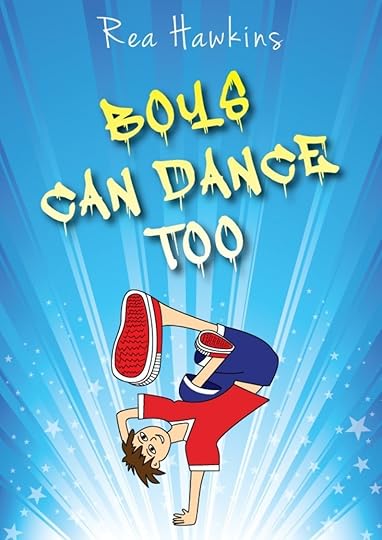
Lucas wants to learn to dance but he’s afraid his friend, Jack, and others will laugh at him. Nevertheless he takes lessons and decides to perform at an assembly. His break dancing is excellent and everyone, including Jack, loves it.
The illustrations are simple drawings colored with marker but they work well with the story. The text, on the other hand, has some problems. The vocabulary does not go with the simple illustrations. For example, Hawkins uses words such as sniggered, mesmerized, effortlessly, corridor, chomping, and possessed. The illustrations seem suited to grade 1 to 3 but the environment and vocabulary seems suited for older children. The students in the story appear to be junior high age. The story itself is simplistic and suited for younger children.
The message, be true to yourself, is a good one. But, I don’t think the target age is clear.


September 9, 2014
Hawkins, Rea. Boys Can Dance Too Book Review

September 8, 2014
Zimmerman, Kurt. Alex Builds a House. Book Review.
While the pictures are adorable and three-dimensional there is not enough variety or context. It would be good to have the builders installing the wiring or the drywall. Most show a single person or item in isolation. They also don’t always correspond as well as they could to the text. The illustrations seem quite primary for the vocabulary and detail of the text.
The explanation of the steps involved in building a house is clear, sequential, and easy to follow. The text is thorough and detailed but aimed for an older, more mature audience than the pictures. This would be a useful book for children wanting to know why their new house is taking so long to be built.


Tonks, Paul. Biddy Bat and the White Collar. Book Review.
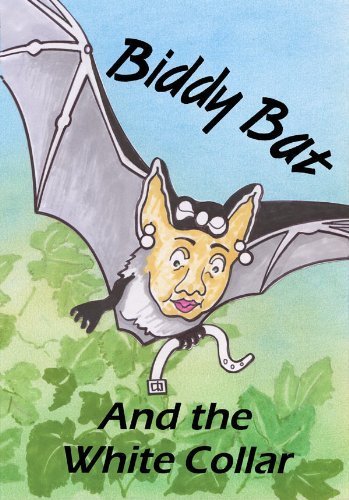
The title and cover leads the reader to believe the story is about a bat but it is actually about a cat. There is no author’s name on the cover and the title has a capitalization mistake.
The sentences in Biddy Bat and the White Collar are run on and repetitive. This is the first page. “When Louise leave school at the end of the day to go home, she always looks forward to seeing Maverick, the black cat who is always there to meet her, and he is a great friend to all the children in the school.” This published picture book reads like a student’s rough draft.
The first page is in present verb tense. The second page is past tense. The third page goes back to present tense which remains until the last page, which switches back to past tense. The author does not know how to use possessive apostrophes. When dialogue finally appears in the story, there are no quotation marks or other indications of proper mechanics. “Biddy Bat cries out Maverick!, and Maverick calls back can you help me? Biddy Bat says yes, and then flies up to the top of the tree, and picks up the white-collar and takes it to Louise, who she knows is waiting at home for news of Maverick.”
The story is about Maverick the cat who somehow has lost his white-collar in a tree and trapped himself in a hole below the tree. The bat finds the collar and the rabbits dig the cat out. The title does not suit the story at all.
The illustrations aren’t too bad, although the bat is rather creepy. Unfortunately the story was far, far, far from ready for publication.


September 5, 2014
Kempa, Maura. Calling HONEYBEES: More Honey Is Needed! A Kids Book About Honeybees And How They Make Honey. Book Review.
It never bodes well when there are capitalization errors and a spelling mistake in the title of a book. Because this topic is timely and important, I hoped the interior would be better edited. Unfortunately, on the second page, we have conversation between a queen bee and a worker bee. It is written all in one paragraph with no quotation marks or speaker identification.
There is a lot of filler throughout the text. Comments like, “sounds pretty simple doesn’t it? Well, let’s see what you think after we explain what each part of our body does. We think you will be amazed!” Throughout the book, there are punctuation and capitalization errors. Illustrations are a mixture of styles of drawings and photographs. It seems as though they were collected from various online sources.
The information is thorough and interesting, but unnecessarily wordy. The word count could have been trimmed by half and would have flowed better.
Although the book contained numerous details on a bee’s body structure and the process of making honey, it did not mention anything about the causes of the population decimation.
As a resource for research, this book could be useful if supplemented by other materials. As a book read for interest, it needed a comprehensive edit. It was NOT ready for market.


September 4, 2014
New Release – No More Red
Sample pages
Just in time for school, my new picture book release, No More Red, is now available on Amazon in kindle format paperback.
Amy is having a very bad day because of red. When Amy wishes she would never see red again, she learns that life is not as enjoyable without it. Readers will enjoy discovering the 98 red things featured in the book.


September 3, 2014
Stehlik, Tania Duprey. Violet. Illustrated by Vanja Vuleta Jovanovic. Book Review.
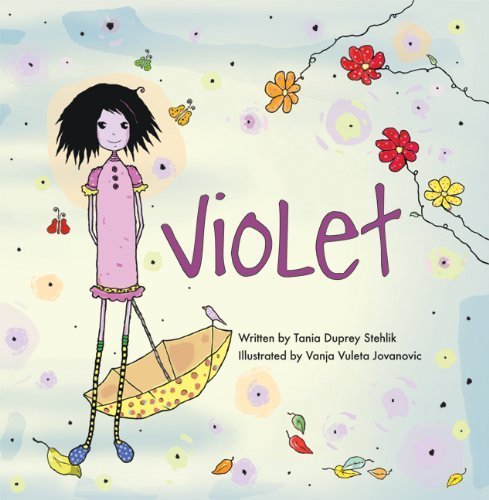
The cover attracted me to this book. Campy, colorful drawings of butterflies, leaves, flowers, and designs surround the word Violet and the picture of an extremely skinny little girl whose skin is purple. The story is fairly simple. Violet begins school and is nervous about making friends. The first day goes well until her father comes to pick her up. Then a girl asks Violet why she isn’t blue like her father. At home, Violet’s mother, who is red, explains that Violet is a mixture of the two of them.
This is a gentle story that tackles a sensitive subject, mixed race children, with a light, positive tone. It also manages to sneak in a little lesson on mixing primary colors to get secondary colors.
I think this would be an excellent book for all children, not just those from mixed families. Every child should be made aware of comments that may hurt the feelings of children who see themselves, or are seen as, different than the majority. As well, the story shows that the child of mixed race parents can be both beautiful and precious.
The drawings are lively and fun. The length and vocabulary level would be suited to children in second grade but younger children would enjoy hearing the story read by an adult. I think this would be a wonderful addition to the books parents read to their children before they begin school.


September 1, 2014
Rogers, Nikki. A Beautiful Girl. Book Review.
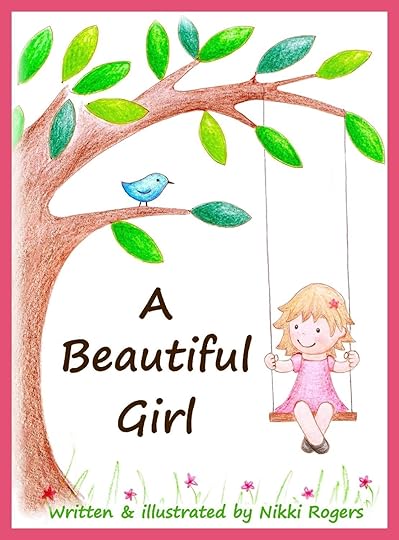
The book is illustrated with sweet, coloring pencil drawings. A little bluebird of happiness appears on every page with the featured girl.
I love the idea that the girls are all different but all beautiful. Each one brings something wonderful to the world. The theme is that every girl is precious and her unique qualities are to be cherished.
The only qualms I have with this book is that the rhyming is a little awkward at times. But the message is wonderful and I would buy this book for any little girl. At the price of 90 cents for the kindle version, it’s a steal.






